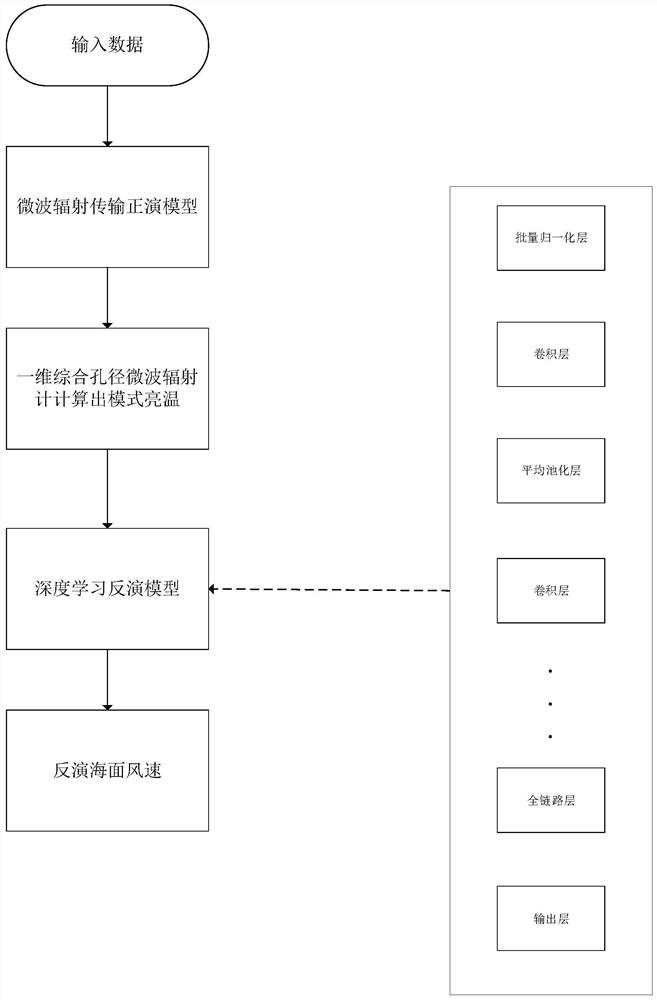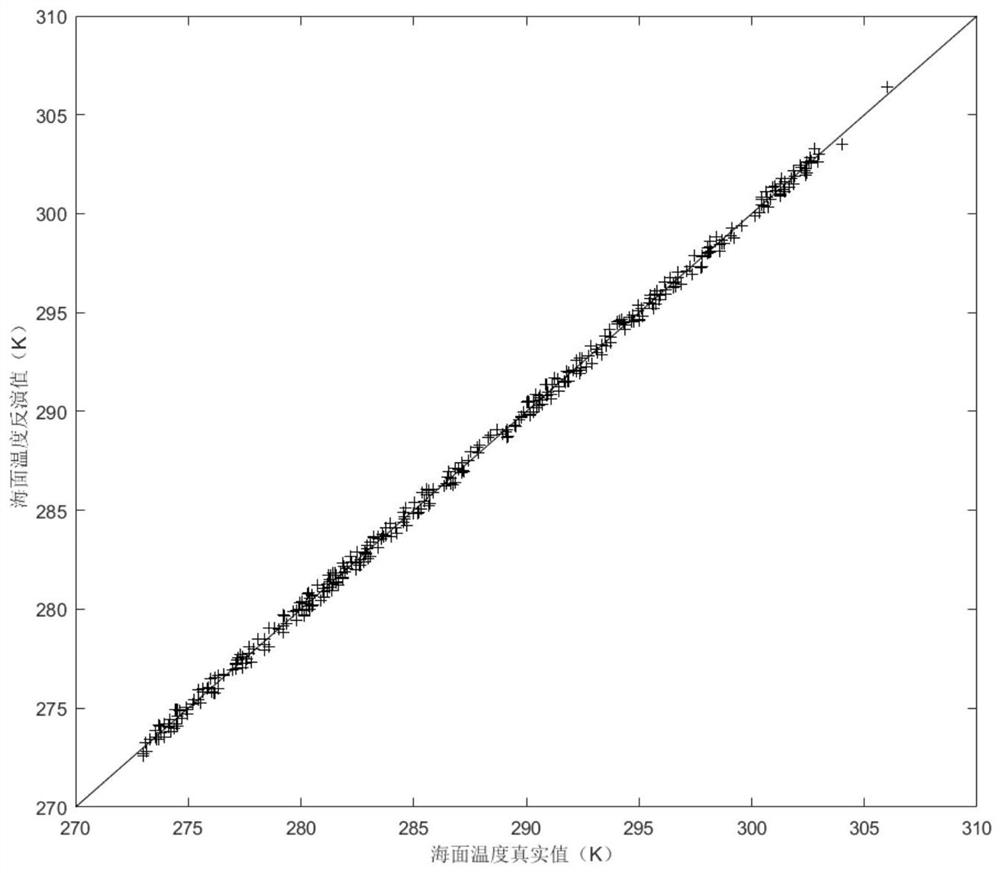One-dimensional synthetic aperture radiometer sea surface wind speed inversion method based on deep learning
A technology of sea surface wind speed and deep learning, applied in the field of remote sensing, can solve problems such as the difficulty of inverting sea surface wind speed, and achieve the effect of small amount of computation
- Summary
- Abstract
- Description
- Claims
- Application Information
AI Technical Summary
Problems solved by technology
Method used
Image
Examples
Embodiment
[0063] 1. Data set acquisition
[0064] Obtain daily 1°×1° sea level model data from the European Center for Medium-Range Weather Forecasts (ECMWF) from January 1 to December 31, 2016, including sea surface wind speed, sea surface temperature, sea surface wind direction, sea water salinity, cloud liquid water content and atmospheric water vapor content, etc., and screened out data set C containing 80,740 sets of data. C is randomly divided into two parts, the initial training set A and the initial verification set B. The training set and the verification set account for 80% and 20% of the initial data set C, respectively. Input A and B into the radiation transfer forward modeling model and the one-dimensional synthetic aperture microwave radiometer model, output the simulated brightness temperature and put it back into A and B to obtain the training set A' and the verification set B'.
[0065] 2. Construction of deep learning convolutional neural network
[0066] In this ste...
PUM
 Login to View More
Login to View More Abstract
Description
Claims
Application Information
 Login to View More
Login to View More - R&D
- Intellectual Property
- Life Sciences
- Materials
- Tech Scout
- Unparalleled Data Quality
- Higher Quality Content
- 60% Fewer Hallucinations
Browse by: Latest US Patents, China's latest patents, Technical Efficacy Thesaurus, Application Domain, Technology Topic, Popular Technical Reports.
© 2025 PatSnap. All rights reserved.Legal|Privacy policy|Modern Slavery Act Transparency Statement|Sitemap|About US| Contact US: help@patsnap.com



